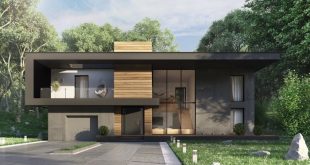Defining the “Dream Home”
Dream home house design – The concept of a “dream home” is deeply personal and multifaceted, varying significantly across different demographics and life stages. It’s more than just bricks and mortar; it represents aspirations, security, and a vision of the ideal lifestyle. This section explores the characteristics that define a dream home for various groups and the emotional and lifestyle factors that shape these preferences.
A dream home transcends mere physical attributes; it’s intrinsically linked to the emotional well-being and aspirations of its inhabitants. The feeling of belonging, the sense of security, and the potential for creating cherished memories are all key components of this elusive ideal. The design and features of the home become symbolic representations of these deeper emotional needs.
Dream Home Characteristics Across Demographics, Dream home house design
The definition of a “dream home” changes dramatically depending on the homeowner’s life stage and circumstances. For example, a young couple might prioritize a modern, stylish apartment in a vibrant urban setting, emphasizing proximity to work, entertainment, and social activities. Their dream home may reflect their ambition and desire for a dynamic lifestyle. In contrast, a family with young children will likely prioritize space, safety, and proximity to good schools and parks.
Their dream home becomes a haven for family life, emphasizing functionality and comfort. Retirees, on the other hand, may focus on accessibility, low-maintenance features, and a peaceful, tranquil environment, perhaps in a smaller, more manageable home closer to family or recreational opportunities. Their dream home symbolizes a comfortable and fulfilling retirement.
Emotional Connection to Ideal Homes
The emotional connection to a dream home is profound and deeply personal. It often reflects a sense of accomplishment, security, and belonging. For many, it represents a culmination of years of hard work and sacrifice, a tangible manifestation of their dreams and aspirations. The home becomes a sanctuary, a place of comfort and refuge, where individuals can relax, recharge, and connect with loved ones.
This emotional investment goes beyond the financial aspect; it’s about creating a space that reflects one’s personality, values, and life goals. The memories created within the walls of the home further strengthen this emotional bond, transforming the house into a true home.
Lifestyle Factors Influencing Dream Home Preferences
Numerous lifestyle factors influence individual preferences for a dream home. These include career, family size, hobbies, and personal values. For example, a remote worker might prioritize a home office with a view, while a family with multiple children might need a large backyard for outdoor activities. Those who enjoy entertaining might seek a home with an open-plan design and ample living space, while others may prefer a more secluded and private setting.
Furthermore, environmental concerns, such as energy efficiency and sustainable building materials, are increasingly becoming important considerations for many. The dream home, therefore, reflects a holistic vision of the desired lifestyle, encompassing both the physical space and the way of life it supports.
Helpful Answers: Dream Home House Design
What are some common design mistakes to avoid when planning a dream home?
Common mistakes include neglecting proper site analysis (sun exposure, views, etc.), overlooking long-term maintenance costs, insufficient storage planning, and inadequate consideration of future needs (aging in place, family growth).
How can I find a reputable architect or builder?
Seek referrals from friends and family. Check online reviews and professional associations. Interview multiple candidates, examining their portfolios and understanding their approach to your project.
What are the current trends in dream home design?
Current trends include incorporating sustainable materials, prioritizing indoor-outdoor flow, embracing smart home technology, and focusing on minimalist aesthetics with a blend of natural elements.
How long does it typically take to build a dream home?
The timeframe varies significantly based on the size and complexity of the project, but generally ranges from 6 months to over a year.
Designing your dream home involves careful consideration of every detail, from the layout to the landscaping. A crucial element is the exterior, and to help visualize your perfect facade, you might find the exterior house design app incredibly useful. This allows you to experiment with different styles and materials before committing to any final decisions, ultimately bringing your dream home design to life more effectively.
 Interior Living
Interior Living
